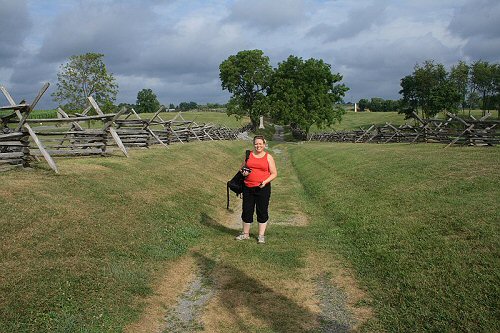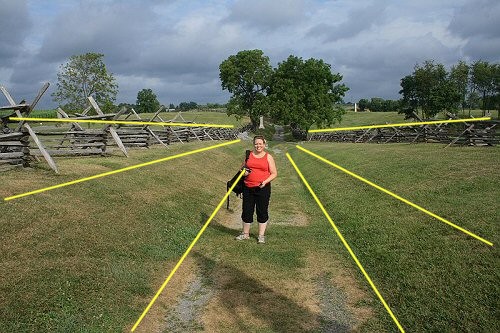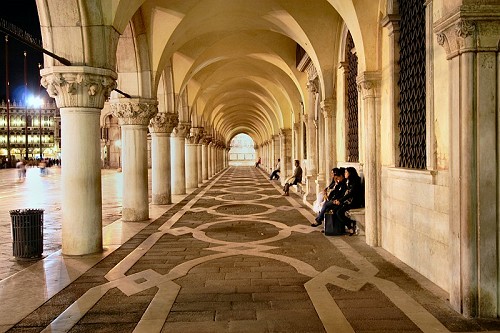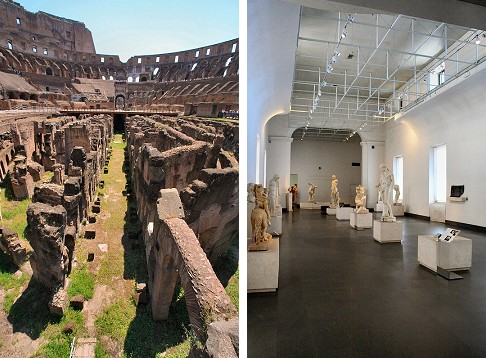![]()
Family Travel Photographs.com provides the following travel photography tutorial for photography and family traveler enthusiasts.
Follow the Leading Lines
Lines Can Draw the Viewers' Eyes Through
Your Travel Photos
The human eye naturally follows lines. Think about what happens when you point at something. The person starts at your face, looks down to your arm, follows that line out through your finger and on to what you're pointing to.
Artists and architects will use leading lines in their work, to manage the viewer's perspective of the subject.
This concept applies to photographic composition. If you compose your photo so that lines point towards the subject of your image, the viewer's eye will be naturally drawn to follow those lines and into the photo.
Take a look at the photo below:

This image is full of leading lines. Do you see them?

I've drawn in some lines to help you see. All of these lines point to an invisible infinity point in the distance, forming a visual channel into the photo. My wife is positioned right in that visual channel, drawing the eye directly to her. That's why the Rule of Thirds isn't a big problem with this image, even though she's almost in the center. In this case the leading lines trump the rule of thirds, resulting in an image that is well composed. (I'd still move her a foot or two to her left to get that monument off the top of her head though.)
Lines are everywhere. As I said before, architects plan them in to buildings because they are so effective.
Here are a few more shots with leading lines.

Capital Museum in Rome. Michelangelo designed the piazza, and the geometric shapes he worked into the ground very intentionally draw the eye to the buildings. I clearly intended to use these lines in this photo; I positioned myself at the apex of the two lines coming from the bottom of the photo, creating an impression almost like a crab's pincher, reaching out to grab the building.

St. Marks Square in Venice. Everything about this hallway draws you through it.

The first two examples were easy. But what about these shots?
The one on the left is the Coliseum in Rome. Doesn't that long center aisle walk your eye straight through it to the opposite side? The tops of the stone columns on either sides also lead you that way. The photo on the right is in the Capital Museum in Rome. Notice how those light rails along the ceiling run towards the statue in the back, of the discus thrower? The aisle itself, and the row of pedestals, also lead your eye to the end statue. The people who designed this room did that on purpose, to draw you in and through the room from the moment you entered. This photo also shows that the lines don't always have to point to the center to be effective in your photo.
Keep your eyes open to lines and how they run through your image. They can be compositional devices to make your travel photos more interesting.

